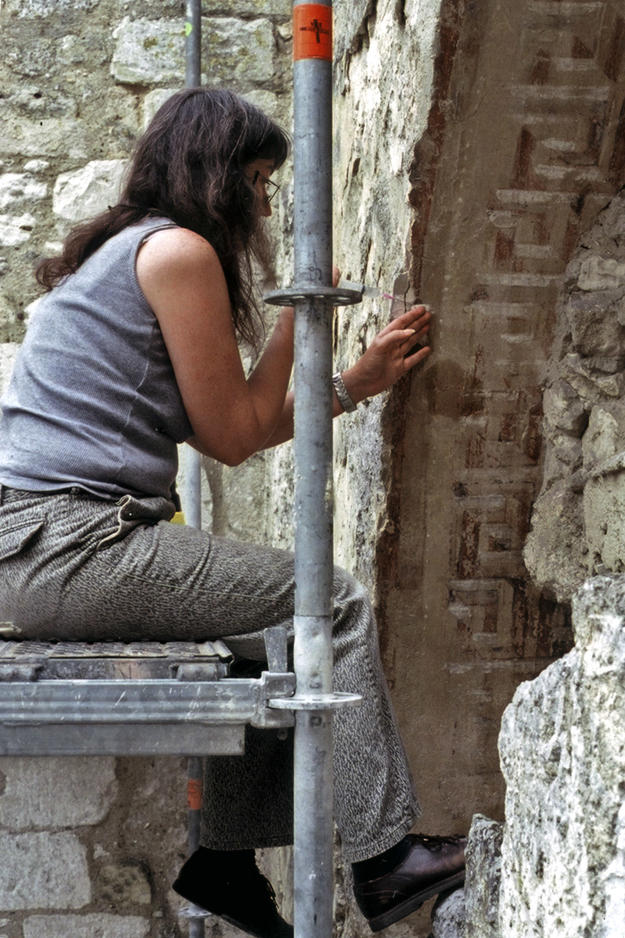Jumièges Abbey
Nestled in a bend of the Seine River in Normandy, the picturesque Abbey of Jumièges is a key feature of one of the oldest and most important monasteries in Western Europe. It was celebrated in the writings of Stendhal and Victor Hugo, and was the subject of paintings of Corot and Turner. The monastery was founded in 654 by Saint Philibert on a gift of land by Queen Bathilde, the wife of Clovis II. Its long history includes ravage by Vikings, rebuilding, more destruction in religious wars, and subsequent rebuilding. A center of education and religious power, the Abbey was forced to close during the French Revolution, and was sold at auction in 1793 to a merchant who exploited the complex for its fine stone. In the nineteenth century, the exploitation stopped and the site became famous as a picturesque ruin—little of the original monastic complex remained.
Painted surfaces were cleared of the deposits obscuring their images
One of those remains is the small, late-tenth-century church of Saint-Pierre, one of only two Carolingian churches in northern France with standing walls. Restorations had been carried out in the thirteenth and fourteenth centuries, but its roof was destroyed in the eighteenth century. Exposure to the elements and an alarming rate of deterioration affected its neglected wall paintings – which became the focus of a World Monuments Fund-supported conservation initiative. A three-pronged program was devised to remedy the damage, with WMF involved in the first two phases. The first, begun in 2003, centered on study and documentation. Tests performed on the plaster and pigments determined their composition and chronology. The second phase included stabilizing the figurative and decorative images and a few of the decorative paintings. The plaster support for the paintings was reattached to the masonry in cases where it had become separated, and edges were reinforced. The painted surfaces were cleared of the deposits obscuring their images, and layers of paint were reinforced. These interventions culminated in preparation of a detailed report that included drawings and photographs, in 2004.
Jumièges Abbey is recognized as one of a small number of significant complexes in medieval European architecture. The renowned site is visited for the combination of its architectural and natural beauty, as well as its pivotal historical importance. Conservation of the paintings in the Church of Saint-Pierre enhances public appreciation of the Abbey long into the future.


